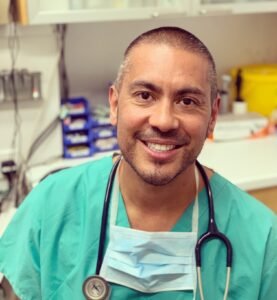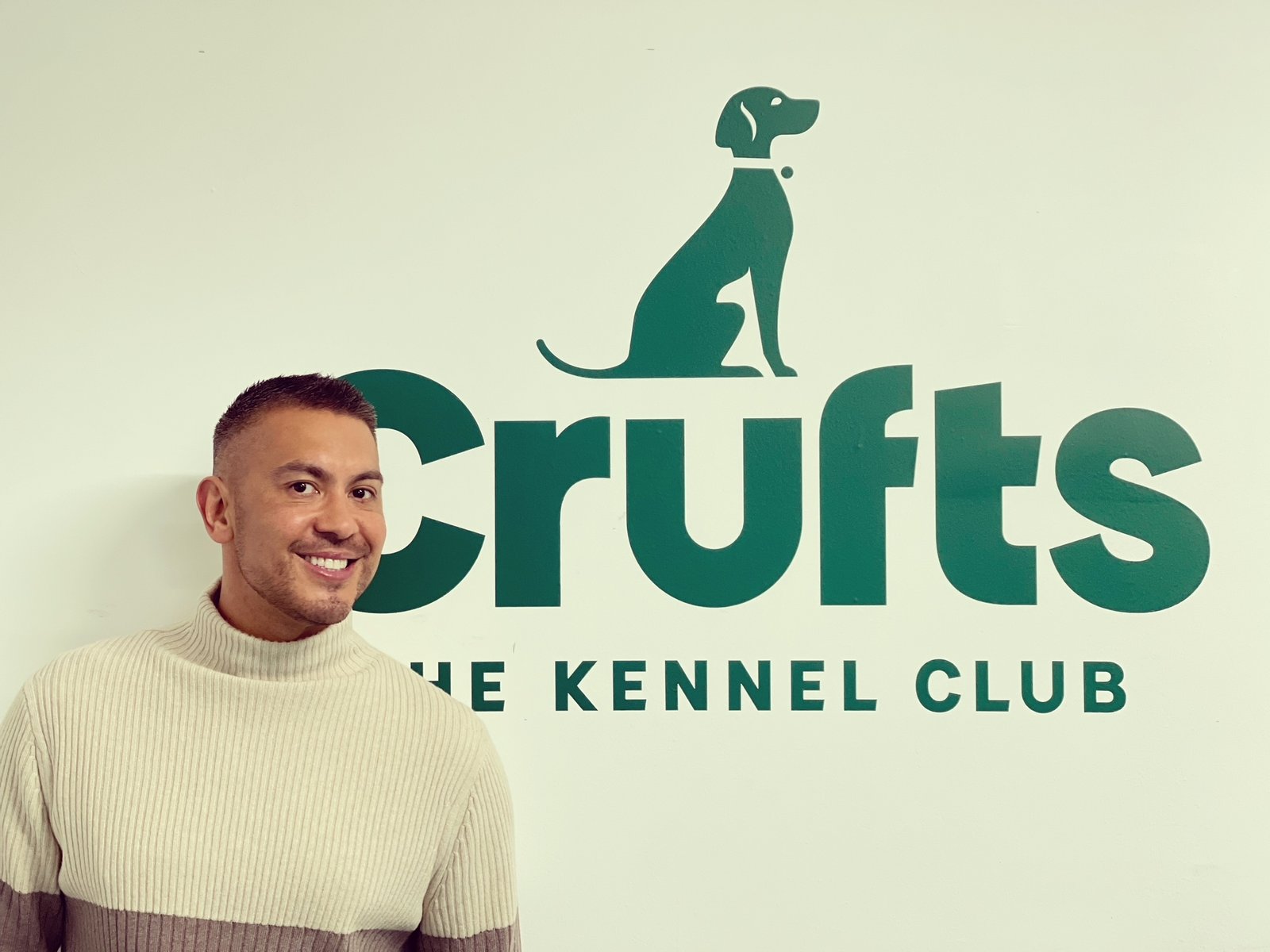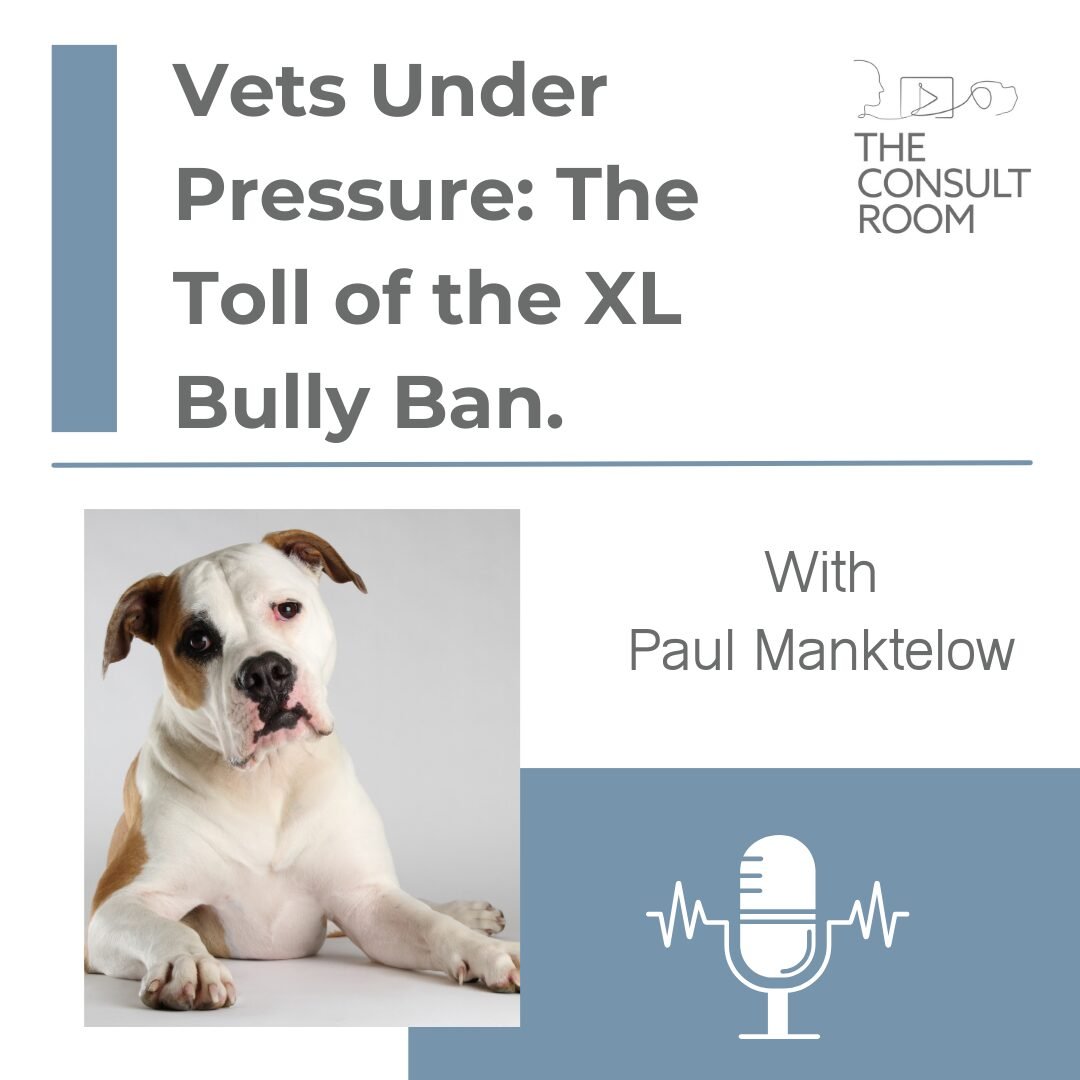November sees a national campaign which is incredibly important for vets and pet owners alike: the Antibiotic Amnesty. So to help raise awareness about the campaign and its purpose, I met with Fergus Allerton, a highly respected figure in the veterinary sector and a driving force in the fight against antibiotic resistance, for a definitive dive into all things antibiotics.
LISTEN TO THE CONSULT ROOM SERIES 3 PODCAST FOR OUR FULL DISCUSSION
Most of us are aware that antibiotics, a group of drugs widely used to treat infection, have changed the landscape of both human and animal medicine for the better. However, this wide use – plus equally wide misuse and dodgy disposal of these medicines – is recognised as contributing to growth of antibiotic-resistant bacteria known as AMR (Antimicrobial Resistance).
The World Health Organization has declared AMR among the top ten global public health threats, so when Fergus mentions the situation is ‘apocalyptic’ in the podcast, it’s truly something to take seriously. But how has this come about?
Antibiotics and Animals
Antibiotics may be prescribed to animals just like they are to humans, and identifying the illness first is a key part of the vets’ role, as Fergus described:
‘Just like doctors we want to make sure we are treating something that will respond to antibiotics – so viral infections won’t benefit from antibiotics, we don’t have antibiotics for them. We have to make those same decisions every day – as vets we evaluate a patient, we decide that potentially they have a bacterial infection that could benefit from antibiotics and then we make the same decision.’
But the different types of infection aren’t the only consideration – for vets there’s also the huge variety of animals they treat. So vets have to consider the species of animal, the animal’s symptoms, type of infection or health condition, before choosing the best drug for treatment. Fergus agreed all of this is important – and more:
‘It’s not just in terms of their (antibiotics) efficacy but also in terms of their side effects. So there are certain medications or certain antibiotics that would be perfectly safe in humans or in dogs but might cause significant side effects in cats, for example. So we have to be aware of all those complexities when making our prescribing decisions.’
Different drugs
Such complexities are partly because different classes of antibiotics are based on their mechanism of action, as Fergus explained:
‘That mechanism can dictate which type of bacteria they are most effective against. So we can predict with a reasonable degree of confidence which bacteria we might encounter in different environments. So the ones we find on skin, causing skin infections, may be different from those that we’d find in the gut or in our bladders for example. So, we want to choose an antibiotic that is effective against the type of bacteria we’re likely to find in certain sites.’
Vets, like doctors, also have to consider whether the antibiotic can reach the infected area. For instance, some antibiotics concentrate well in the urine to treat a urine infection but won’t penetrate tissue, so they wouldn’t be the appropriate treatment for a prostate problem.
Fergus also explained another factor that surprises many – vets must also consider human medicine:
‘There are various groups that have categorised antibiotics according to their critical priority [tier] – so how important are these antibiotics for human use? And we need to be aware of that because we want to try and choose the antibiotics of the lowest tier, the ones that are going to have the smallest impact if bacteria became resistant to them.’
Prescribing decisions to protect everyone
Supporting vets with such prescribing decisions is part of the Protect Me campaign, which began around the time I started working at a hospital in south east London. Working with approximately 10 other vets, our Protect Me goal was to discuss and agree which antibiotics we would use for certain conditions.
Listen to the podcast to learn why the lengthy discussions involved were so innovative and important.
Discourse amongst vets, in collaboration with the human medicine sector, continues to be vital. It’s grown from happening within veterinary practices to occurring throughout the veterinary profession – and Fergus revealed the new version of Protect Me is due soon:
‘We’ve just completed the process of reviewing those [Protect Me] guidelines and we’ve had 55 vets involved in that process. It does generate a lot of discussions, a lot of gentle and friendly disagreement as to what the best choice is but increasingly we’re becoming ‘anti’ antibiotics where we don’t need to use them.’
All ‘anti’ recommendations are based on research and evidence. In one example, Fergus explained research which demonstrated that dogs struggling with haemorrhagic diarrhoea syndrome get better just as quickly without antibiotics as they do with treatment by the antibiotic Metronidazole: ‘so our latest recommendations are no antibiotics for acute diarrhoea even if it’s got blood in it – unless that animal is showing signs of sepsis – and there’s as good an evidence-base for that recommendation as there is for anything in veterinary medicine.’
Learn about how side-effects from Metronidazole may cause sustained problems with microbiomes and why Fergus is not in favour of using it.
Owners onboard
Whilst vets are encouraged to utilise the Protect Me guidance to support prescribing decisions, some vets experience pressure from owners who may not understand why antibiotics aren’t the right treatment.
However, with overuse of antibiotics in human medicine gaining greater visibility, this type of pressure is starting to give way to increased understanding. Thanks to GPs now regularly explaining to patients why antibiotics aren’t needed for certain conditions, plus a Public Health England (PHE) TV campaign about antibiotic resistance and the importance of keeping antibiotics working, more owners are open to conversations about effective treatment choices and overall health. As part of his campaign, Fergus has two tools to help vets with this:
- The non-prescription form, used when a vet decides against using an antibiotic. The form details why they’ve made that decision and includes alternatives which might help the animal recover.
- An animation video for showing in vets’ waiting rooms. Like the PHE human antibiotics campaign, this raises awareness about AMR and encourages owners to follow veterinary advice and avoid requesting antibiotics.
Staying on course
But with the message to use fewer antibiotics, in both human and animal medicine, comes slight confusion – because when prescribed as the appropriate treatment, antibiotics always come with the instruction to ‘complete the course.’
Find out more about ‘complete the course’ in the podcast
However short or long the prescribed course is, completing the course is essential. Fergus explained why:
‘If we undertreat we can risk recurrence of that disease process and that infection coming back and causing illness again. And we certainly don’t want to overtreat because that will lead to unnecessary antibiotic use as well. So it’s finding that perfect medium of what is an ideal antibiotic course.’
Research in the human medical sector reveals people don’t always finish courses of prescribed antibiotics, sometimes because side effects like nausea may feel worse than the original condition. Sometimes people stop taking the medicine because they’ve recovered quickly, or the GP changes the treatment.
As vets, we recognise another problem with leftover medication: when owners hold onto them ‘just in case’. ‘That can cause real problems because it can cause some really unanticipated side effects, it can delay us reaching the right diagnosis to actually help that animal so we really must discourage that type of behaviour.’ Fergus shared. ‘I understand it, I think you pay a lot for some of these drugs and you think that they might be useful but please don’t use them, that can cause all sorts of adverse effects.’
Underuse, overuse – and after-use
Fergus also explained why what happens to antibiotics next is another, significant part of the AMR problem:
‘We know that leftover antibiotics do occur and what we wanted to try and address is the way people dispose of them. Because if they just throw them out – into household waste or down the toilet – it leads to environmental pollution and also can damage our water courses. It can change those ecosystems and it can perpetuate this problem of antimicrobial resistance.’
Certainly, environmental contamination by antibiotics is a hot topic in both human and veterinary medicine. For vets, the conversation is particularly around parasiticides, the consequences of them leaching into the environment and their effect on our natural order. Fergus pinpointed that human action is absolutely at the heart of this destructive cycle:
‘Unfortunately there is evidence that there are antibiotics residues in rivers on every continent on the planet now. That’s partly due to us taking antibiotics and them passing through us, which is normal, but it will be contributed to by inappropriate disposal of unused antibiotics. And if that does happen, bacteria in the environment will be exposed to those low concentrations of antibiotics and may develop resistant strains. Then those resistant strains might come back and get us if we then get infected by bacteria in the environment.
So it’s that cycle – we are putting antibiotics into an environment that we might then be exposed to in the future and we might end up with resistant bacteria that can be a real challenge to treat in the future.’
AMR – the antibiotics apocalypse
It’s easier to understand the scope of this challenge if we fast-forward a few decades. Fergus described the potential consequences if leakage into the environment and the increase in residues isn’t controlled:
‘This is apocalyptic – Dame Sally Davies likened the challenge from antimicrobial resistance to that of climate change. We’re all familiar with climate change, it’s on every news bulletin you watch these days, but AMR could be of similar magnitude. Lord Jim O’Neill did a brilliant study back in 2016 where he anticipated that by 2050 – so within a generation – we could be looking at 10 million people dying per year due to multidrug-resistant infections.’
Fergus also explained the impact of AMR in terms of human medicine and treatment: ‘It could block us from being able to do chemotherapy, so cancer patients could be deprived of that life-saving therapy. It could stop us having hip replacements, knee replacements because you wouldn’t be able to protect from any surgical-site infections. And that would be catastrophic – they would be either life-threatening or limb-threatening procedures so this has massive ramifications for human and for animal health.’
The podcast reveals how other, specific examples like MRSA, highlight the shared problem between human and animal health sectors.
Time for action is now
Collaboration between human and animal health spheres is already underway and Fergus shared why this is vital:
‘This is a one health problem and we’re all in this together. And I think that we want to – there’s no point in us working in individual silos on our own – we want to share those resources, share what works and try and incorporate those strategies into different practices.’
Which is where November’s Antibiotic Amnesty comes in. Originally developed by a working group at NHS Midlands, to help improve human health and reduce AMR, it was first taken up by the veterinary and animal health sector in 2022. Like the human health sector, the amnesty focuses on returning leftover antibiotics for safe disposal, as:
- Veterinary practices facilitate the amnesty with dedicated disposal bins. Whilst owners have always been able to return leftover medications, during November returning unused antibiotics to a dedicated bin enables the scale of the problem to be audited.
- Owners are asked to check through cupboards for all unused antibiotics and return animal medications to the vet practice and human medicines to local pharmacies.
Alongside achieving the return of a good number of unwanted antibiotics and preventing them from being flushed into our environment, Fergus shared his hopes the amnesty will generate greater awareness of AMR:
‘If people are thinking I am going to go and check my cupboards because I don’t want these antibiotics to contaminate the environment, they are thinking about the bigger picture, they’re recognising what can be done – a small step. We all have to work together on this one, making small changes to combat the risk from antimicrobial resistance. If everyone does their little bit, like recycling, like not using a plastic bag each time you go to the shops, we can make that difference together.’
Together – globally
With WHO recognising AMR as a global issue, another challenge for the campaign is ensuring that ‘together’ includes our global neighbours. With many different approaches to the availability, purchase, prescribing and disposal of antibiotics across the world, the amnesty has potential to generate greater global collaboration in conversations around AMR – and Fergus detailed another role for the veterinary sector in this:
‘WSAVA (the World Small Animal Veterinary Association) are going to embrace the amnesty and it’s going to be part of our output next year to try and take this amnesty globally and to invite different countries to also try to ensure the safe disposal of antibiotics where they are. So we’re encouraging anyone listening around the world to adopt these policies, they apply wherever, but local situations may vary.’
Antibiotic stewardship for all
The Protect Me and Antibiotics Amnesty initiatives are integral to what is known as Antibiotic Stewardship: the safe and responsible use of antibiotics. In the podcast we summarise this as three simple actions:
- Prescribing less or prescribing only when needed.
- The appropriate administration of antibiotics by owners, in line with how they’ve been prescribed.
- Safe disposal of unwanted or unused medicines.
Fergus has the final word on how November’ Antibiotics Amnesty brings Antibiotic Stewardship together: ‘Until now that disposal part has been the missing link and that’s where the amnesty hopefully fills that gap and ensures that guardianship is complete: right from that process of making that prescribing decision, through to the end of life (if you like) of that antibiotic drug itself. It’s either going into an animal to treat a known bacterial infection or it’s going back to the vets so it can be disposed of appropriately.’
ANTIBIOTICS AMNESTY ACTION FOR ALL
Whether you’re a pet owner, a vet or someone with an interest in protecting the environment and global health, you can get involved:
- Listen to the full podcast here.
- Find out more at the RUMA Companion Animal and Equine website a primary source of useful information and resources about the Antibiotics Amnesty, for vets and animal owners.
- Be part of the Antibiotics Amnesty and return unused medications.
 Dr Paul Manktelow is a vet who’s worked for almost 20 years on the front line in some of the UK’s busiest veterinary hospitals. As Chief Vet in the Charity Sector, he leads a team of vets and nurses that treat thousands of pets every year. Paul also appears regularly in the media as a TV and radio presenter, writer, public speaker and podcast producer.
Dr Paul Manktelow is a vet who’s worked for almost 20 years on the front line in some of the UK’s busiest veterinary hospitals. As Chief Vet in the Charity Sector, he leads a team of vets and nurses that treat thousands of pets every year. Paul also appears regularly in the media as a TV and radio presenter, writer, public speaker and podcast producer.






Leave A Comment